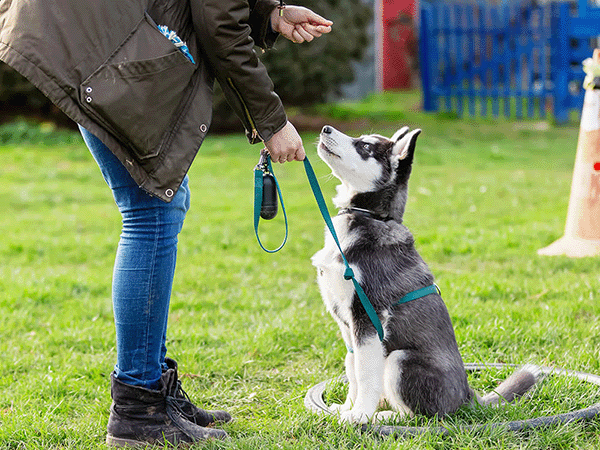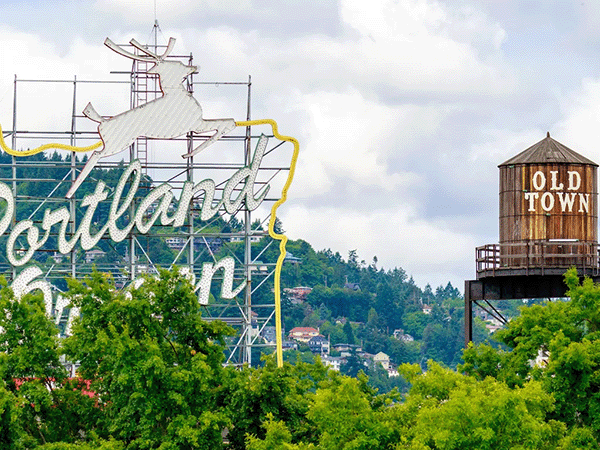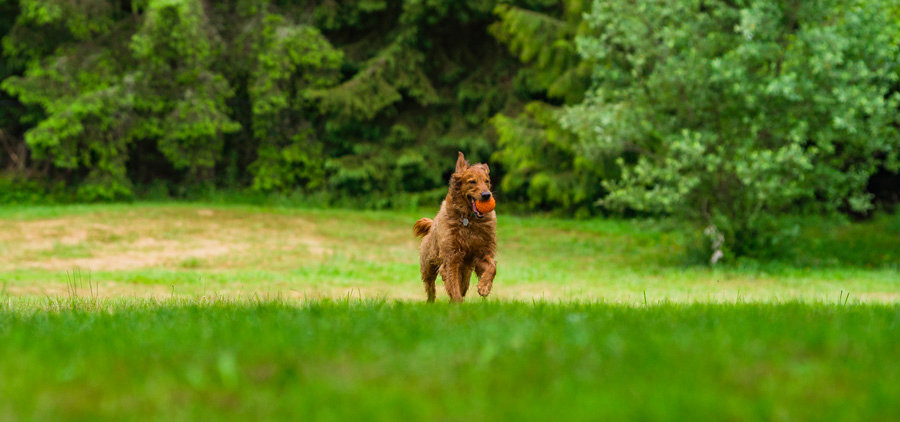Bull Terrier: Breed Guide, Care, and Temperament

Discover the Bull Terrier, a breed celebrated for its playful, friendly, and alert nature. Recognized as a medium dog, Bull Terriers have their origins in England, where they were initially bred for fighting and bull-baiting starting in the early 19th century.
In this post, we share insights from nearly 10,000 Sniffspot users, offering practical advice for new and prospective Bull Terrier owners. Whether you’re considering adopting or rescuing a Bull Terrier or already have one, you’ll find valuable tips on how to care for and enjoy life with a playful Bull Terrier.
Thinking about adding a Bull Terrier to your family? They're known for their unique looks and playful personalities, but what's everyday life really like with these egg-headed goofballs? We've tapped into the wisdom of nearly 10,000 Sniffspot users to give you the inside scoop on Bull Terriers. From quirky habits like "trancing" to their exercise needs and potential health concerns, we'll cover it all. This guide will help you decide if a Bull Terrier is right for you, whether you're a first-time owner or a seasoned pro. We'll even share tips on training, socialization, and finding the perfect Bullie to bring home. As Sniffspot user Howard says, “They are misunderstood, amazing dogs that need to be adopted!”
Source: Sniffspot Community Breed Survey 2024
Bull Terrier Essentials: At a Glance
- Breed Type: Terrier
- Size: Medium
- Life Expectancy: 10 to 14
- Healthy Weight Range: 50 to 70
- Height Range: 21 to 22
- Temperament: Playful, Friendly, Alert
- Coat Type: Short, smooth coat
- Color: White, brindle, fawn, red, black, or a combination
Key Takeaways
- Bull Terriers are loving companions: Despite their history, these dogs are known for their playful and affectionate nature, thriving in homes with proper training and socialization. Their unique appearance and quirky personality add to their charm.
- Training requires patience and consistency: Bull Terriers have an independent streak, so positive reinforcement and clear boundaries are crucial for successful training. Early socialization helps them develop into well-adjusted adults.
- Understand their specific needs: Be prepared for potential health issues like skin allergies and digestive sensitivities. Ensure you can provide adequate exercise and mental stimulation to keep your Bull Terrier happy and healthy. Sniffspot offers safe and enriching environments for them to play and explore.
Getting to Know the Bull Terrier
According to nearly 10,000 Sniffspot community users who shared real-world data about their Bull Terrier, we learned that these dogs are playful and friendly. The Bull Terrier is also known to be very friendly and social with children and very friendly with other pets.
When living with a Bullie, 86% of our owners indicated that a large house with a fenced yard is ideal. Additionally, 26% of owners found that an apartment or condominium with regular walks is also acceptable. This dog is moderately trainable, often benefiting from a professional trainer and owners say that the Bull Terrier learns best with positive reinforcement, training aids, and consistent routines.
In terms of exercise, 40% of Sniffspot owners say their Bull Terrier benefits from moderate exercise every day, including between 1-2 hours of activity each day, including walks and active play sessions. The Sniffspot Bullie community would recommend this dog for first-time owners.
Physical Characteristics: The Unique Look of a Bull Terrier
The Egg-Shaped Head and Triangular Eyes
One of the most distinctive features of a Bull Terrier is their uniquely shaped head. It’s often described as egg-shaped, almost flat on top, and slopes down to their nose. This, combined with their unusual triangular eyes, gives them an instantly recognizable and somewhat quirky expression. These dark, deep-set eyes contribute to their alert and intelligent gaze. It's a look that's both endearing and unforgettable.
The Short, Dense Coat and Prominent White Color
Bull Terriers have a short, dense, and easy-to-maintain coat. While many picture a pristine white Bull Terrier, their coats actually come in a variety of colors. White, red, fawn, black, brindle, and even striking combinations are all seen in the breed. This variety adds to their unique appeal. Because of their short coat, Bull Terriers can be sensitive to colder temperatures. A cozy sweater might be a good idea for chilly walks, especially during those crisp autumn evenings.
Finding the right outdoor space for your Bull Terrier to run and play is important. Check out Sniffspot's dog parks for safe and enriching environments.
Standard vs. Miniature Bull Terriers
There are two sizes of Bull Terrier: the Standard and the Miniature (often called a Mini Bull or MBT). Both share the distinctive head shape and playful personality but differ in size. Miniature Bull Terriers typically stand between 10 and 14 inches tall and weigh between 20 and 35 pounds. They are known for their energetic and playful nature, though they can sometimes be a bit stubborn, just like their standard-sized counterparts. If you’re looking for all the Bull Terrier charm in a smaller package, a Miniature Bull Terrier might be the perfect fit.
The Bull Terrier: Origins and History
The Bull Terrier was first developed in England during the early 19th century, originally bred as a fighting dog for the brutal sport of bull-baiting. Breeders crossed Bulldogs with various terriers to create a dog that was tough, agile, and fierce in the pit. However, as bull-baiting and dog fighting became illegal, Bull Terriers gradually shifted from being fighting dogs to loyal companions.
By the mid-1800s, breeders, notably James Hinks, refined the breed into what we recognize today, focusing on their distinctive egg-shaped heads and muscular bodies. Hinks sought to create a more elegant version of the breed, resulting in a dog that was not only physically striking but also had a more stable temperament. Over time, Bull Terriers became popular as family pets due to their loyalty, playfulness, and quirky personalities.
Today, the Bull Terrier is known for its clownish and affectionate nature, making it a beloved companion for many. While their muscular build and fearless attitude hint at their fighting past, modern Bull Terriers are friendly and energetic, making excellent pets for families with the time and patience to train them.
James Hinks and the Shaping of the Modern Bull Terrier
By the mid-1800s, the Bull Terrier we know and love today started taking shape, thanks largely to the efforts of breeder James Hinks. He envisioned a more refined and elegant version of the breed, moving away from the purely functional fighting dog of the past. Hinks focused on developing the Bull Terrier’s now-distinctive egg-shaped head and powerfully muscular physique. This shift in breeding not only resulted in a striking and unique look but also contributed to a more predictable and stable temperament.
From Vermin Control to Beloved Companion
As blood sports like bull-baiting and dog fighting were outlawed, the Bull Terrier’s role began to evolve. No longer needed for the pit, these dogs gradually transitioned from fighters to companions. Their inherent loyalty, playful energy, and often quirky personalities made them surprisingly well-suited to family life. Over time, these traits, combined with their distinctive appearance, helped solidify the Bull Terrier’s place as a beloved pet. This shift from vermin control and fighting to loyal companion is a fascinating example of how a breed can adapt and thrive in changing times.
The Emergence of the Miniature Bull Terrier
In the early 20th century, a smaller version of the Bull Terrier emerged—the Miniature Bull Terrier. Developing this smaller variation required careful and selective breeding to maintain the breed’s unique characteristics while avoiding potential health issues that can sometimes arise with miniaturization. The Miniature Bull Terrier eventually gained recognition from the American Kennel Club in 1991, further solidifying its place as a distinct breed. While sharing the standard Bull Terrier’s playful and affectionate nature, the Miniature version offers a smaller-sized option for those who may prefer a more compact companion.
Bull Terrier Temperament and Traits
- Temperament: Playful, Friendly, Alert
- Energy Level: Moderate
- Trainability: Moderately trainable – Learns commands with consistent training and practice.
- Grooming needs: Low maintenance – Requires minimal grooming, such as occasional brushing and baths.
- Good with Kids: Very friendly and social with children
- Good with Other Pets: Very friendly with other pets
Understanding the Bull Terrier's Independent Nature
Bull Terriers are known for their playful and endearing personalities, but they also possess a stubborn streak and a strong independent nature. While their devotion to their families is unwavering, this independence means they aren't always the easiest dogs to train. As the American Kennel Club points out, this makes them a less-than-ideal choice for a first-time dog owner. An experienced owner who understands how to handle a dog with a mind of their own will be best equipped to provide a Bull Terrier with the guidance and structure they need.
The Importance of Early Socialization
Early socialization is crucial for Bull Terriers. Introducing them to a variety of people, dogs, and environments from a young age helps them develop into well-adjusted adults. Proper socialization minimizes the likelihood of dog aggression and helps them learn to interact appropriately with others. This includes visits to dog parks, puppy classes, and regular exposure to new sights and sounds. A well-socialized Bull Terrier is a happy Bull Terrier.
Potential for Separation Anxiety and Obsessive-Compulsive Behaviors
Bull Terriers thrive on companionship and don't do well when left alone for extended periods. They can be prone to separation anxiety and may develop obsessive-compulsive behaviors if not given enough attention and mental stimulation. Providing plenty of engaging activities, like puzzle toys and regular exercise, can help alleviate these tendencies. Consider booking a Sniffspot for your dog to enjoy while you're away. If you work long hours or are frequently away from home, a Bull Terrier might not be the right breed for your lifestyle.
Quirky Behaviors: Trancing and Tail Chasing
Bull Terriers are known for some quirky behaviors, including "trancing" (sometimes called "ghost walking") and tail chasing. Trancing involves the dog slowly creeping forward while something gently touches their back or head. While the cause of this behavior remains a mystery, it appears to be harmless.
Tail chasing can be a sign of obsessive-compulsive behavior, often linked to a lack of exercise or attention. Ensuring your Bull Terrier gets adequate physical and mental stimulation can help minimize this behavior. If excessive tail chasing persists, consult with a veterinarian or a professional dog trainer.
Thinking of Owning a Bull Terrier? What to Expect
As a Bull Terrier owner, it’s important to know the best dog breed tips and what to expect from current Bull Terrier owners.

Source: Sniffspot Community Breed Research 2024
Bull Terrier Grooming Guide
Bull Terrier dogs require low-maintenance grooming. This means Bull Terrier owners should expect minimal grooming, like occasional brushing and baths. Bull Terrier dogs have a short, smooth coat coat, which is ideal for protection when fighting. Their short, smooth coat coat is considered moderate shed.
To keep your Bull Terrier’s coat healthy and up to breed standards, brush weekly to manage shedding. Of the coat types for breeds in the terrier group, the grooming needs for Bull Terrier are considered to be low maintenance.
Exercise Tips for Your Bull Terrier
Bull Terriers require moderate activity each day. Though one of the most popular dog breeds, Bullies are considered a very athletic, high-energy breed. Bullies make great pets and thrive with between 1-2 hours of activity each day, including walks and active play sessions. Owners of Bullies report their dogs especially love tug-of-war, chasing/playing with a ball or frisbee, and chasing/playing with a ball or frisbee.
When medium breeds like Bullies don’t get sufficient exercise, they’re more likely to act out with undesirable behaviors like stubbornness and reactivity. They need consistent training, mental activity, and regular moderate exercise to avoid excess energy.
Exercise Needs and Recommendations for Adult Bull Terriers
Bull Terriers require moderate activity each day. While a popular breed, Bullies are athletic and energetic. They thrive with one to two hours of daily activity, including walks and active play. Owners report their Bull Terriers love tug-of-war and playing with balls or frisbees. Finding activities your Bully enjoys strengthens your bond and provides essential physical and mental stimulation. A tired Bully is a happy Bully!
When medium-sized breeds like Bullies don’t get enough exercise, they’re more likely to display undesirable behaviors like stubbornness and reactivity. Providing adequate outlets for their energy helps prevent these issues. Consider activities like agility training or visits to a dog-friendly water park to keep your Bull Terrier engaged.
Exercise Considerations for Bull Terrier Puppies
Puppies shouldn’t do strenuous exercise until their bones are fully developed (12–18 months). While tempting to let your Bull Terrier puppy run freely, it’s crucial to protect their growing joints. Overexertion at a young age can cause long-term health problems. Instead of long runs, focus on shorter, more frequent walks and gentle play.
Even without strenuous exercise, Bull Terrier puppies need consistent training, mental activity, and regular moderate exercise. This can include short walks, playtime in a securely fenced area like a Sniffspot, and engaging training sessions. Mental stimulation is just as important as physical exercise for puppies. Puzzle toys and basic obedience training are great ways to keep their minds active and prevent boredom.
Feeding Your Bull Terrier: Diet and Nutrition
What should you feed your Bull Terrier to keep them healthy? As a moderate energy breed, what you feed them is important. A reported 67% of our community feed their Bullie commercial dry kibble.
With moderate exercise, Bullies should eat 1.5 to 2.5 cups of vet-recommended food to maintain a healthy weight of around 50 to 70 lbs. However, your Bull Terrier’s ideal weight and food depend on your pet’s sex, activity level, and age.
Bull Terrier Health: Potential Concerns
The Bull Terrier breed is most prone to skin conditions (e.g., allergies, dermatitis) and digestive issues (e.g., bloating, sensitive stomach). A reported 62% of our Bull Terrier owners reported skin conditions like allergies, yeast infections, impetigo, ringworm, alopecia, and folliculitis. Bullies’ risk for these challenges increases as they age.
Similarly, 33% reported digestive issues like constipation, diarrhea, vomiting, and lack of appetite. Lastly, 26% of Bull Terrier owners claim their dog struggles with ear infections caused by allergies, ear mites, or contact dermatitis — a common Bullie health concern. If you’re worried about any of these health issues above, talk to your dog’s vet.
Felicia Montenegro on Unsplash
Common Health Issues in Bull Terriers
While Bull Terriers are generally robust, they're predisposed to certain health conditions. Being aware of these can help you provide the best possible care for your Bullie. Our Sniffspot community research provides valuable insights into the health concerns faced by this breed.
Luxating Patella, Kidney Disorders, and Eye Problems
Like many breeds, Bull Terriers can experience luxating patellas (slipped kneecaps). This condition can range in severity from occasional slippage to chronic lameness. Kidney issues, including kidney disease and stones, are also a concern. Additionally, certain eye problems, such as lens luxation and cataracts, can occur. Regular veterinary checkups can help detect these issues early.
Heart Disease and Deafness
Heart disease, particularly valve issues, can affect Bull Terriers. Deafness is another potential concern, and it's significantly more prevalent in pure white Bull Terriers (20.4%) compared to colored ones (1.3%). Skin allergies are also a common issue across the breed. If you have a white Bull Terrier, discussing deafness risks with your vet is recommended.
Lethal Acrodermatitis and Neutrophilic Cholangitis in White Bull Terriers
White Bull Terriers are specifically at risk for two serious conditions: lethal acrodermatitis, a rare and often fatal skin disease, and neutrophilic cholangitis, a liver condition. While these are less common than other health concerns, it's important to be aware of them and discuss any concerns with your veterinarian.
The Importance of Regular Veterinary Checkups
Regular veterinary checkups are crucial for maintaining your Bull Terrier's health. These visits allow your vet to monitor your dog's overall well-being, detect potential problems early, and provide preventative care. Early intervention is often key to successful treatment, so schedule an appointment if you notice any changes in your Bull Terrier's behavior, appetite, or physical condition.
Lifespan of a Bull Terrier: Recent Studies and Data
Bull Terriers have an average lifespan of around 9-10 years, although some live longer with proper care and a healthy lifestyle. Providing a balanced diet, regular exercise, and a loving environment can contribute to a longer, happier life for your Bull Terrier. Enriching activities and safe places to play, like those available on Sniffspot, can also contribute to their overall well-being.
Are Bull Terriers Friendly?
Another important thing to consider when adopting a Bullie is whether or not this breed fits with your current family. How friendly are Bull Terriers compared to other medium-sized breeds?

Source: Sniffspot Community Breed Survey 2024
With moderate training, you can hone your Bullie’s terrier instinct into a playful and friendly family dog. Introducing your pet to positive reinforcement (treats, praise, rewards) and use of training aids (e.g., harnesses, leashes, training collars) early helps them avoid undesirable behaviors like stubbornness and reactivity. Our community Bull Terrier owners comment on their pet’s friendliness:
- Mini bull terriers are so playful – they really do spin around in a full 360 when doing zoomies!! This sense of humor and positivity brings me so much joy. (Vi)
- Extremely loveable, smart, easygoing, loves his walks, loves being at our side, not clingy yet not fully independent, low maintenance. (Donna)
- So friendly and cuddly. Loves hugs and wants to live in your lap. (DA)
Understanding Bull Terrier Friendliness and Socialization
Bull Terriers have a playful and friendly nature, but like all breeds, early socialization is key. Expose your Bull Terrier to a variety of sights, sounds, people, and other dogs from a young age. This helps them develop into well-adjusted adults. Positive reinforcement methods, such as treats and praise, work best with this breed. Consistent training with aids like harnesses and leashes helps establish good behavior and manage their sometimes strong-willed nature. This foundation helps prevent undesirable behaviors like stubbornness and reactivity as they mature.
Remember, even with their friendly disposition, training is an ongoing process throughout their lives. Enrolling your Bull Terrier in obedience classes can provide valuable socialization opportunities and reinforce basic commands. It also offers a chance for your Bullie to interact with other dogs in a structured setting, further enhancing their social skills.
Bull Terriers and Other Pets: Managing Prey Drive and Potential Aggression
While generally friendly with other pets, Bull Terriers have a natural prey drive, inherited from their terrier ancestors. Early socialization with other animals, especially in a controlled environment like puppy classes, can help mitigate this. Supervise interactions with smaller pets, as their instinct might kick in. With proper introductions and ongoing socialization, many Bull Terriers coexist peacefully with other animals in the household.
It's important to remember that every dog is an individual, and some may require more careful management around other pets than others. If you're introducing a Bull Terrier to a home with existing pets, take it slow and provide plenty of positive reinforcement for good behavior. Choosing compatible playmates for your Bull Terrier, considering size and temperament, can also contribute to harmonious relationships within the household.
Bull Terriers are energetic dogs. This high energy translates to a need for regular exercise and mental stimulation. Finding a safe, enclosed space for them to run and play, like a Sniffspot, can be a great way to meet their exercise needs. A tired Bull Terrier is a well-behaved Bull Terrier, and providing adequate outlets for their energy can help prevent potential behavioral issues stemming from boredom or frustration.
Bull Terriers and Children: Considerations for Families
Bull Terriers are often described as loving and affectionate with children, sometimes earning them the nickname "nanny dog." However, it's crucial to supervise interactions between any dog and young children. Teach children how to interact respectfully with dogs, avoiding behaviors like pulling tails or ears. Explain to children that dogs have boundaries too, and respecting those boundaries is essential for a safe and happy relationship.
While Bull Terriers are generally good with kids, their playful exuberance and strength could accidentally overwhelm a small child. Structured playdates with supervision can help build a positive bond between the dog and children. Creating a safe space for the dog where they can retreat if they feel overwhelmed is also a good idea. A well-socialized and trained Bull Terrier can be a wonderful addition to a family with children, creating a loving and playful environment for everyone.
Training Your Bull Terrier: A Practical Guide
Whether you’re adopting a Bullie puppy or an adult Bull Terrier, training is a significant part of owning a medium-sized breed. Without proper training, your Bullie is more likely to display undesirable behaviors such as stubbornness and reactivity. Providing stimulating activities is a great first step, but this needs to be paired with the right training for your Bullie.
As a terrier breed, Bull Terriers benefit from praise and positive reinforcement. Here’s what our Bullie community recommended based on their experience with their own dogs:
- Positive Reinforcement (93%): This includes treats, praise, rewards, and so on for positive behavior
- Training Aids (43%): Dog training aids like martingale collars, walking harnesses, and no-pull attachments
- Consistent Routines (38%): A consistent training routine allows your pet to get comfortable with expectations
As dogs bred for fighting and bull-baiting, Bullies are considered moderately trainable, often benefiting from a professional trainer.
Positive Reinforcement Training for Bull Terriers
As a terrier breed, Bull Terriers thrive on positive reinforcement. This means rewarding desired behaviors with praise, treats, toys, or even a favorite game. Our Sniffspot community overwhelmingly agrees, with 93% of Bullie owners recommending this method. Positive reinforcement builds a strong bond between you and your dog, making training a fun and rewarding experience for both of you. It also helps your Bullie associate good behavior with positive outcomes, encouraging them to repeat those behaviors.
Start by identifying what motivates your Bull Terrier. Is it a particular dog treat, a squeaky toy, or enthusiastic praise? Once you know what gets your dog excited, you can use it as a reward during training sessions. Keep training sessions short and focused, especially in the beginning. Even five to ten minutes of concentrated effort can be more effective than a long, drawn-out session where your dog loses interest. For more training tips, check out our resources on dog training.
Addressing Stubbornness and Independence in Training
Bull Terriers are known for their independent nature, which can sometimes translate to stubbornness during training. This doesn't mean they're untrainable; it just means they require a patient and consistent approach. Consistency is key. Everyone in the household should use the same training commands and methods to avoid confusing your Bullie. This includes consistent access to safe spaces for your dog to play and relax.
If you're struggling, consider working with a professional dog trainer. They can provide personalized guidance and address specific training challenges. A trainer can also help you understand your dog's body language and communication cues, which is crucial for effective training. Early socialization is also important for Bull Terriers. Exposing them to different people, places, and dog parks from a young age can help them develop into well-adjusted adults and reduce the likelihood of reactivity.
Crate Training and Managing Separation Anxiety
Bull Terriers are prone to separation anxiety and don't typically do well when left alone for extended periods. Crate training can be a helpful tool in managing this, providing your dog with a safe and secure space. However, keep in mind that Bull Terriers can be clever escape artists, so choose a sturdy crate designed for strong breeds. Make sure the crate is appropriately sized for your Bullie, allowing them enough room to stand, turn around, and lie down comfortably.
Introduce the crate gradually and make it a positive experience. Start by placing treats and toys inside to encourage your Bullie to explore it. Never use the crate as a punishment. It should be a comfortable den-like space where your dog feels safe and relaxed. If your Bull Terrier's separation anxiety is severe, consult with your veterinarian or a professional dog trainer. They can recommend additional strategies, such as behavior modification techniques or medication.
Food Possessiveness: Training and Management
Some Bull Terriers can exhibit food possessiveness, which is important to address early on. This behavior can manifest as guarding their food bowl or becoming aggressive when someone approaches them while they're eating. Start by hand-feeding your Bullie some of their meals. This helps build trust and positive associations with you being near their food. You can also try scattering their kibble in a secure outdoor space to encourage foraging behavior.
Gradually introduce the concept of trading. Offer your dog a high-value treat in exchange for the food they're guarding. This teaches them that giving up their food can result in something even better. Never try to take food away from a possessive dog directly, as this could escalate the situation. If you're concerned about your Bull Terrier's food possessiveness, consult with a professional dog trainer or veterinary behaviorist.
Why Bull Terrier Owners Adore Their Dogs
We asked Sniffspot Bullie owners what they love the most about their Bull Terrier pups, and here’s what they had to say:
- I love the loyalty and unconditional love a bull terrier will have for you. (Stephanie )
- My sweet Asher is the biggest sweetest cuddler. She has always been my best friend and been by my side. (Logan)
- She gives everyone a chance- even some of the really fussy foster siblings she has had to deal with! (CL)
Challenges of Bull Terrier Ownership
Similarly, Bullie owners shared some of the biggest challenges of living with their Bull Terrier:
- As a puppy, the listening was not great, but she absolutely loves kids. (Jazlyn)
- Aggressive nature when caught off guard (ie animals and people in the yard). (Stephanie)
- Her strength and occasional stubbornness. Also society’s misconception of pitties under this umbrella. (Mackenzie)
Is a Bull Terrier Right for You? (First-Time Owners)

Source: Sniffspot 2024 Community Dog Breed Survey
According to 57% of our Sniffspot community, Bull Terriers are a great first-time dog. This comes from their playful nature and moderate exercise needs. Bull Terrier owners say it best:
- Our bull terrier has an absolute love for humans and is moderately tempered – loves to play but also loves to be a couch potato. (CP)
- These dogs are really big clowns and will keep you laughing every day. (Sheree)
- Our BT is a medical rescue, so he was a TON of work when we first fostered him. He eventually was prescribed daily medication for his severe skin allergies, and now life for all of us has gotten a lot easier. What we love most about Bull Terriers is that they are super fun and playful, but also have their own distinct personality and are super cuddly. (LK)
Experience Level and Bull Terrier Ownership
While our Sniffspot community overwhelmingly agrees that Bull Terriers make wonderful companions, the question of their suitability for first-time owners is a bit more nuanced. A whopping 57% of our community members believe Bull Terriers *are* a great choice for first-time dog owners, citing their playful personalities and moderate exercise needs. This aligns with feedback like this from Sniffspot user CP: “Our bull terrier has an absolute love for humans and is moderately tempered—loves to play but also loves to be a couch potato.” However, it's important to consider the breed's history and inherent traits. Our Sniffspot Community Breed Survey offers more insights from current Bull Terrier owners.
Bull Terriers were originally bred for fighting, which has instilled in them an independent and sometimes stubborn streak. This doesn’t mean they’re untrainable, but it *does* mean they require a dedicated owner who is prepared to invest time and effort in consistent training. As one owner, Jazlyn, pointed out, “As a puppy, the listening was not great…” This reinforces the importance of starting training and socialization early. Positive reinforcement techniques, such as using treats and praise, are highly effective with this breed. Many Bull Terrier owners also find that using training aids, like harnesses and leashes, can be beneficial, especially given the breed’s strength. You can find more training tips and connect with qualified trainers through resources like Sniffspot's Top Dog Trainers.
So, is a Bull Terrier right for a first-time owner? It depends. If you’re prepared to commit to training, provide plenty of socialization opportunities (consider checking out Sniffspot's dog parks near you!), and understand the breed’s unique personality, then a Bull Terrier could be a loving and loyal addition to your family. However, if you’re looking for a low-maintenance dog that requires minimal training, this might not be the best breed for you. Resources like the Wikipedia page on Bull Terriers and our own Sniffspot Community Breed Survey 2024 offer valuable insights into the breed and can help you make an informed decision.
Tips for Happy Bull Terriers (and Their Owners!)
Luckily, our Sniffspot community is full of experienced, trustworthy Bullie owners. These Bull Terrier breed owners share the most essential dog breed tips and advice for prospective or new dog owners:
Finding Your Bull Terrier: Adoption vs. Breeders
- Get a bull terrier from a REPUTABLE breeder as they are prone to genetic aggression towards people and animals. And socialize young. Bull terriers are comparable to the Belgium mal. (Aujonae)
- Most importantly, go to an animal shelter. Adopt and rescue, don’t shop! If you’re looking for a lovable, loyal, and smart dog, look no further. My sister and I have a total of 4. They are amazing! (KE)
Understanding Your Bull Terrier's Strength
- Know your dog. Their personalities and temprement in certian conditions change with every passing year. As much as we love them, as proud as we are of them, you have to be brave enough to anticipate and prevent situations where they might be tested. I love my boy, but I also understand how big and strong he is. Whether he reacts negatively or 200% positively, he will do so with the same weight, the same teeth and nails. (Camden)
- Understand the breed. Read up on them. They have funny quirks but are super affectionate so you have to get to know your individual dog. Never underestimate the strenght of your dog when on a walk. Train them from day one. (Donna)
Managing Reactivity in Your Bull Terrier
- I would get them as a puppy or a well-adjusted rescue since they are easier to train when young. Mine is a rescue and has taken loads of training to help him adjust to the world. He has made gains but it is still very difficult with reactivity. I think this breed is great for a very active family who is willing to do intentional training daily! (AC)
- Maintain socialization and train. They are smart breeds and can understand so much! (Tiffany)
Bull Terriers and Kids: A Good Mix?
- Being gentle doesn’t appear to come naturally. They have good sweet intentions, but need training on how to play gently. (DA)
- Be patient and understanding and know they think they’re helping protect their family. (Ashley)
Finding the Right Bull Terrier: Adoption vs. Breeders
Bringing a Bull Terrier into your life is a big decision! Whether you choose to adopt or go through a breeder depends on your circumstances and priorities. Adoption is a wonderful way to give a deserving dog a second chance. Check out your local shelters and rescue organizations—you might just find your perfect match. If you’re set on a puppy and certain traits, a reputable breeder is the way to go. However, as Sniffspot user Aujonae points out, it’s crucial to find a responsible breeder who prioritizes the health and temperament of their dogs. Bull Terriers can be prone to genetic aggression, so early socialization is key, similar to breeds like Belgian Malinois. This means exposing your Bullie to various people, places, and situations from a young age to help them develop into well-adjusted adults. Another Sniffspot user, KE, emphasizes the importance of adoption, highlighting the lovable, loyal, and smart nature of rescued Bull Terriers. For more information on finding the right dog for you, check out Sniffspot's resources on dog breeds.
Understanding Your Bull Terrier's Strength and Energy Levels
Bull Terriers are energetic dogs with a playful spirit. While they don't require hours upon hours of exercise, they do need regular activity to stay happy and healthy. According to our Sniffspot community's dog breed survey, Bull Terriers thrive on about 1-2 hours of activity per day, including walks and playtime. Think tug-of-war, fetch, and other engaging games. This moderate exercise requirement makes them a good fit for many lifestyles, but it's important to be prepared to meet their needs. As the survey also reveals, insufficient exercise can lead to undesirable behaviors like stubbornness and reactivity. So, plan for those daily play sessions and walks—it's a win-win for both you and your Bullie! If you're looking for fun places to let your Bull Terrier run and play, check out Sniffspot's listings of dog parks near you.
Managing Reactivity in Your Bull Terrier
While Bull Terriers are generally friendly, some can exhibit reactivity, especially if not properly socialized and trained. Sniffspot user AC recommends starting training early, whether you adopt a puppy or a well-adjusted rescue. Consistent, intentional training is essential for managing reactivity and helping your Bull Terrier become a well-behaved companion. Another user, Tiffany, emphasizes the importance of ongoing socialization, even for adult dogs. This means continuing to expose your Bull Terrier to new experiences and reinforcing positive interactions with people and other animals. For more tips on training, visit Sniffspot's dog training resources.
Bull Terriers and Kids: Creating a Safe and Harmonious Environment
Bull Terriers can be wonderful family dogs, but it's important to manage interactions with children carefully. As Sniffspot user DA notes, Bull Terriers may not instinctively understand how to be gentle, so teaching them appropriate play is crucial. This involves supervising interactions, teaching kids how to handle the dog respectfully, and intervening if play gets too rough. Another user, Ashley, reminds us to be patient and understanding, as Bull Terriers are often protective of their families and may react if they perceive a threat, even if unintentional. Creating a safe and harmonious environment for everyone requires clear boundaries, consistent training, and open communication between humans and canines. For more information on dog breeds and their compatibility with families, visit Sniffspot's dog breed guide.
Frequently Asked Questions about the Bull Terrier
Bull Terrier Lifespan: How Long Do They Live?
The average lifespan of a Bull Terrier is typically between 10 to 14 years.
Bull Terrier Size and Appearance
An adult Bull Terrier weighs between 50 to 70 pounds and stands between 21 to 22 inches tall.
Grooming Your Bull Terrier: How Much is Enough?
Bull Terrier dogs require low maintenance grooming. Regular grooming helps to keep their coat healthy and manageable. Bull Terrier dogs have a short, smooth coat coat, which is well-suited for protection when fighting. They are considered moderate shedders.
To maintain your Bull Terrier’s coat, it’s important to brush weekly to manage shedding. Among terrier breeds, Bull Terrier grooming is categorized as relatively easy.
How Much Exercise Does a Bull Terrier Need?
Bull Terriers require moderate activity each day. Though one of the most popular dog breeds, Bullies are classified as a moderately athletic, somewhat high-energy breed.
Bullies are excellent companions and thrive with between 1-2 hours of activity each day, including walks and active play sessions. Owners of Bullies note that their dogs particularly enjoy tug-of-war, chasing/playing with a ball or frisbee, and chasing/playing with a ball or frisbee.
If medium breeds like Bullies don’t receive enough exercise, they may develop unwanted behaviors. These dogs need ongoing training, mental stimulation, and consistent exercise to channel their energy effectively.
Are Bull Terriers Good with Children?
According to our data, Bull Terriers are very friendly and social with children with children.
Do Bull Terriers Get Along with Other Pets?
Our research indicates that Bull Terriers are very friendly with other pets with other pets.
Best Food Choices for a Healthy Bull Terrier
As a moderate energy breed, the diet of your Bullie is crucial. A significant 67% of our community feed their Bullie commercial dry kibble.
For optimal health, Bullies should consume 1.5 to 2.5 cups of vet-recommended food to maintain a healthy weight around 50 to 70 pounds. The exact amount and type of food will depend on your Bull Terrier’s sex, activity level, and age.
Common Bull Terrier Health Issues
The Bull Terrier breed is particularly prone to skin conditions like allergies, yeast infections, impetigo, ringworm, alopecia, and folliculitis and digestive issues like constipation, diarrhea, vomiting, and lack of appetite. Our data shows that 62% of Bull Terrier owners reported skin conditions like allergies, yeast infections, impetigo, ringworm, alopecia, and folliculitis. Bullie’s risk for these health issues increases as they age.
Additionally, 33% reported digestive issues like constipation, diarrhea, vomiting, and lack of appetite. Finally, 26% of Bull Terrier owners indicated their dog struggles with ear infections caused by allergies, ear mites, or contact dermatitis, which are common Bullie health concerns. If you have concerns about any of these health issues, consult your Bullie’s veterinarian.
Bull Terrier Lifespan: How Long Do They Live?
Bull Terriers typically live between 10 to 14 years, which is within the average lifespan for breeds in the terrier group. Proper nutrition, regular exercise, and consistent veterinary care can help your Bullie live a longer, healthier life. For more insights into Bull Terrier care, check out our Sniffspot Community Breed Survey 2024.
Bull Terrier Size and Appearance: Standard vs. Miniature
Standard Bull Terriers typically weigh between 50 and 70 pounds and stand 21 to 22 inches tall. Miniature Bull Terriers are smaller but share the same distinctive egg-shaped head and muscular build. Our Sniffspot Community Breed Survey 2024 offers a closer look at the size variations within the breed.
Grooming Your Bull Terrier: How Much is Enough?
Bull Terriers are relatively low maintenance when it comes to grooming. Their short, smooth coat only requires weekly brushing to manage shedding and occasional baths to stay clean. For more specific grooming tips, take a look at our Sniffspot Community Breed Survey 2024.
How Much Exercise Does a Bull Terrier Need?
Despite their muscular physique, Bull Terriers need a moderate amount of exercise—around one to two hours each day. This can include walks, playtime at a safe dog park, and engaging in activities like fetch or tug-of-war. Our Sniffspot Community Breed Survey 2024 provides further information on their exercise requirements.
Are Bull Terriers Good with Children?
Bull Terriers are generally known for their friendliness and sociability with children. However, early socialization and supervised interactions are always important for building positive relationships between dogs and kids. Learn more about Bull Terriers and children in our Sniffspot Community Breed Survey 2024.
Do Bull Terriers Get Along with Other Pets?
Bull Terriers can coexist peacefully with other pets, especially if they are socialized from a young age. However, it's important to be mindful of their terrier instincts and supervise their interactions with other animals. Our Sniffspot Community Breed Survey 2024 offers more information on this topic.
Best Food Choices for a Healthy Bull Terrier
Feeding your Bull Terrier a balanced diet is crucial for their overall health. Many owners choose commercial dry kibble, but selecting a high-quality brand that meets their nutritional needs is essential. A typical daily portion is 1.5 to 2.5 cups, adjusted according to your dog's age, activity level, and health. Consult your veterinarian for personalized guidance. Our Sniffspot Community Breed Survey 2024 also offers helpful dietary advice.
Common Bull Terrier Health Issues
Bull Terriers can be prone to certain health problems, such as skin allergies, dermatitis, and digestive issues. Regular veterinary checkups are essential for early diagnosis and treatment. Our Sniffspot Community Breed Survey 2024 provides a detailed look at common health concerns in Bull Terriers.
Helpful Resources for Bull Terrier Owners
Whether you’re a current Bull Terrier dog owner or you’re considering adopting a Bullie, Sniffspot is here to lend a helping hand. Here are some of the most relevant resources for Bull Terrier owners.
Sources:
Related Articles
Most recent articles
Related articles
Top dog guides per area
Dog training guides

Dog Food Aggression: Why You Shouldn't Punish It
Does your dog ever growl when you walk by their food dish? Maybe they get possessive of treats, carrying them far away and giving you side-eye when you start to approach — or snarling at your other pets or children if they get too close.

Best Dog Fields in the US: 25+ Wide-Open Spaces for Your Pup to Run Free
The best dog fields in the US offer something that traditional enclosed parks simply can't match: acres of open space where your pup can truly stretch their legs and run at full speed. From Colorado's 470-acre prairie meadows to Tennessee's award-winning "Outback," these wide-open spaces allow dogs to roam, explore, and exercise naturally while engaging instincts that cramped urban parks suppress.

The Ultimate Guide to Scent Training for Dogs
Your dog's nose is an amazing tool. Did you know they have 40 times the olfactory receptors than humans? Scent training for dogs taps into this superpower, turning everyday moments into exciting sniff-fests. It's enriching for all types of dogs – reactive, shy, or simply adventurous. Ready to explore the world of scent work for dogs? Let's get started.

Service Dog Training Costs: DIY vs. Pro
More than 80 million Americans rely on their service dogs to help them navigate the world. Task-trained assistance animals perform a huge range of life-changing—in many cases, life-saving—services: These dogs act as eyes for visually impaired handlers, provide mobility support, alert to seizures and blood sugar crashes, interrupt anxiety attacks, remind their people to take medications, and so much more.

How to Deal With Puppy Potty Training Regression
You thought those dreaded middle-of-the-night potty breaks were over. You were finally free from cleaning up puppy puddles. Then, suddenly, your furry friend starts having accidents again. It's frustrating, right? This puppy potty training regression is more common than you think. Don't worry; we'll help you get your pup back on track. We'll cover the common causes, offer practical solutions, and give you actionable steps to tackle this challenge together.

Dirty Dog Syndrome: Causes, Solutions, and Prevention
It's a cringe-worthy moment every dog owner dreads: your furry friend chowing down on something truly disgusting. If your dog has a penchant for poop, you're dealing with coprophagia. It's more common than you think, and thankfully, often manageable. This article explores the reasons behind dirty dog syndrome, from instinct to learned behavior. We'll also give you practical tips to help break this unpleasant habit.

How to Train Your Rescue Dog: A Complete Guide
* All Sniffspot articles are reviewed by certified trainers for quality, please see bottom of article for details *
Dog enrichment guides

Best Dog Water Parks in the US: 15+ Amazing Splash Destinations for Your Pup
Do you have a water-loving dog looking to burn some energy? There are countless dog parks to visit throughout our country — but some of them become far too hot in the midday sun to be safe for your pets to play. That’s why we’ve put together a list of some of the best dog water parks throughout the United States! At these locations, your pup can frolic, splash, and swim to their heart’s content.

Best Dog Fields in the US: 25+ Wide-Open Spaces for Your Pup to Run Free
The best dog fields in the US offer something that traditional enclosed parks simply can't match: acres of open space where your pup can truly stretch their legs and run at full speed. From Colorado's 470-acre prairie meadows to Tennessee's award-winning "Outback," these wide-open spaces allow dogs to roam, explore, and exercise naturally while engaging instincts that cramped urban parks suppress.

Best Toys for Herding Dogs: Keeping Your Pup Happy & Engaged
Herding dogs are amazing, intelligent companions. But that also means they need more than just a simple game of fetch. Finding the right toys for herding dogs is key to keeping them happy and stimulated. This article explores some of the best toys for herding dogs, including options specifically for breeds like Border Collies and Australian Shepherds. We'll help you discover the perfect herding toys for dogs to tap into their natural instincts and keep them entertained for hours.

Tough Dog Toys for Aggressive Chewers: A Practical Guide
Does your dog destroy every toy you give them? Is your house littered with the remnants of plush toys? Are you tired of wasting money on "indestructible" dog toys for aggressive chewers that don't last? Then this post is for you. We'll cover everything you need to know about finding the best dog toys for aggressive chewers, so you can finally give your pup something safe, durable, and fun.

Daily Exercise Calculator: How Much Exercise Does Your Dog Need?
Everyone knows dogs need exercise, but how much is enough? Walks are great, but creating a truly balanced fitness plan means understanding your dog's specific needs. This post helps you develop a daily exercise calculator for your dog, considering breed, age, and lifestyle. We'll cover fun activities, understanding exercise intensity, and recognizing when your pup has had enough. Let's create a plan that keeps your dog happy and healthy!

Complete Guide To Herding With Dogs
* All Sniffspot articles are reviewed by certified trainers for quality, please see bottom of article for details *

Dog Enrichment Activities: The Ultimate Guide
Ever feel like your dog is restless or bored? They may be getting enough exercise, but still need more. That's where enrichment activities for dogs come in. Giving your dog opportunities to sniff, explore, and problem-solve can make a world of difference. Whether you have a puppy, adult, or senior dog, enriching their environment is key for their well-being. Let's explore how to add cognitive enrichment for dogs, even tailoring activities to your dog's breed with breed specific enrichment and fun enrichment games for dogs.
Dog reactivity guides

Rottweiler Aggression: Truth vs. Myth
Many dogs have gotten a bad reputation over the years for being "dangerous breeds." Rottweilers are among them. Like pit bulls and other large, blocky-headed types of dogs, these powerful and beautiful animals are often assumed to be aggressive.

Best Dog Fields in the US: 25+ Wide-Open Spaces for Your Pup to Run Free
The best dog fields in the US offer something that traditional enclosed parks simply can't match: acres of open space where your pup can truly stretch their legs and run at full speed. From Colorado's 470-acre prairie meadows to Tennessee's award-winning "Outback," these wide-open spaces allow dogs to roam, explore, and exercise naturally while engaging instincts that cramped urban parks suppress.

What Is a Reactive Dog? A Practical Guide for Owners
Does your dog suddenly transform into a barking, lunging Tasmanian devil on walks? It's stressful for both of you. If this sounds familiar, you might have a reactive dog. Understanding what is a reactive dog is the first step to calmer walks. We'll explore the common triggers and give you actionable strategies to manage and modify this behavior. Let's turn those stressful walks into enjoyable outings.

How to Socialize a Reactive Dog: A Step-by-Step Guide
Does your dog display reactivity to other pets or people? Maybe they’re a new rescue pup and are still settling into your home. Or they were sick growing up, so you missed their critical socialization period. Possibly they’ve had a bad experience after being raised as a normal puppy.

What Is a Reactive Dog? A Complete Guide
Is your dog overly excited or fearful around other dogs? Do they bark, lunge, or whine? You might have a reactive dog. Many dog owners face this challenge. Understanding what a reactive dog is is the first step to helping them. This guide explores the common causes of dog reactivity, explains what makes a dog reactive, and offers practical tips and resources. Let's work together to build a stronger bond with your dog and enjoy stress-free walks.

Best Online Dog Training for Reactive Dogs: A Practical Guide
Does your dog's reactivity make walks stressful? You're not alone. Many dog owners face similar challenges. This guide offers practical advice and support for managing reactivity, including finding the best online dog training for reactive dogs. We'll connect you with reactive dog support groups, share training tips, and explore resources like the best dog training app for reactive dogs. Let's build a stronger bond with your dog, together.
* All Sniffspot articles are reviewed by certified trainers for quality, please see bottom of article for details *
How To Groom a Reactive Dog
* All Sniffspot articles are reviewed by certified trainers for quality, please see bottom of article for details *
Sniffspot community guides

The State of Public Dog Parks Across the United States
From 2009 to 2020, there was a 40 percent increase in the development of public dog parks. Designated spots for canine exercise have become commonplace in every major city in North America — many pet owners won’t even consider renting an apartment that doesn’t have its own fenced-in pet area for their canine companions.

Best Dog Fields in the US: 25+ Wide-Open Spaces for Your Pup to Run Free
The best dog fields in the US offer something that traditional enclosed parks simply can't match: acres of open space where your pup can truly stretch their legs and run at full speed. From Colorado's 470-acre prairie meadows to Tennessee's award-winning "Outback," these wide-open spaces allow dogs to roam, explore, and exercise naturally while engaging instincts that cramped urban parks suppress.

How This Family is Affording Their Dream Property Through Renting it Hourly to Dogs
Thousand Oaks, California has been a safe haven for Sniffspot host, Jen, since childhood. Having grown up in busy Santa Barbara, Jen, an introvert from an early age, would seek out solitude and serenity away from tourists attractions and droves of people visiting from elsewhere. “My grandparents own 60 acres about a 30 minute drive from here, and I grew up spending every summer and every holiday visiting them on the ranch,” Jen explained. “In Santa Barbara, we wouldn't go to the beach on the weekend because that's where everybody was, so you'd find places off the beaten path where the tourists weren't. For me, the ranch was just my happy place.”

Host Tips: Ellen K. What Makes Sniffspot Successful for Me
Ellen is the host of Country Pasture Getaway, one of Sniffspot's most popular sniff spots. She has taken the time to write up the lessons she has learned about how to be a great sniff spot host.

How this Oregon Farmer is Making a Business From Renting Her Land to Dogs
Just 20 minutes outside of the busy city of Portland, Oregon, and settled right on the banks of the Columbia River, you’ll find what countless visitors have flocked to the area in search of – mountain views, crisp, clean air, and running water for miles. What you might not expect to find, however, is a hidden oasis designed just for dogs and their people, owned and operated by a farming couple and enjoyed by visitors on two legs, and four.

Host Tips: Fran T. Providing Great Guest Service at our Spot
Fran is the host of Ranch Setting, one of Sniffspot's most popular spots. She has taken the time to write up the lessons she has learned about how to be a great Sniffspot host.

How Sniffspot Helped a Nervous Rescue Work Through His Fears and Change His Family’s Life
This is the story of a family and dog rescuing each other.
Top dog trainers in the US

The Best Dog Trainers in the United States of 2025
This is a list of the top dog trainers in the United States, based on votes from the Sniffspot community and the general public.
The Best Dog Trainers in Seattle, WA of 2025
This is a list of the top dog trainers in Seattle, WA, based on votes from the Sniffspot community and the general public.
The Best Dog Trainers in Portland, OR of 2025
This is a list of the top dog trainers in Portland, OR, based on votes from the Sniffspot community and the general public.
The Best Dog Trainers in Los Angeles, CA of 2025
This is a list of the top dog trainers in Los Angeles, CA, based on votes from the Sniffspot community and the general public.
The Best Dog Trainers in New York, NY of 2025
This is a list of the top dog trainers in New York, NY, based on votes from the Sniffspot community and the general public.
City dog parks guides

Top 10 Indoor Dog Parks: A US Guide
Looking for a space to play with your dog no matter what the weather’s like outside? Look no further than our list of the best indoor dog parks in the United States! These climate-controlled spaces are growing in popularity as pet ownership increases throughout the country. As a bonus, many of them also offer dog training, boarding, grooming, or daycare services on the premises.

Best Dog Fields in the US: 25+ Wide-Open Spaces for Your Pup to Run Free
The best dog fields in the US offer something that traditional enclosed parks simply can't match: acres of open space where your pup can truly stretch their legs and run at full speed. From Colorado's 470-acre prairie meadows to Tennessee's award-winning "Outback," these wide-open spaces allow dogs to roam, explore, and exercise naturally while engaging instincts that cramped urban parks suppress.

Best Dog Parks in the US: Ultimate Guide to Public & Private Off-Leash Adventures
Is your pup giving you those pleading "let me run free" eyes? Whether you're a new dog parent or a seasoned pro looking for fresh adventures, finding the perfect off-leash paradise for your furry friend can feel ruff! From sun-soaked California beaches where your water-loving lab can make a splash to mountain trails in Vermont where your adventure buddy can chase every scent, we've sniffed out the 15 best dog parks across America.

Dog Parks Near Me: Las Vegas Edition
Looking for the perfect dog park near me in Las Vegas? You're in luck! This guide explores all the best options for your pup, from public dog parks to private dog parks near me on Sniffspot. We'll help you find the ideal spot for playtime, socializing, and fresh air. Plus, we'll cover essential etiquette and safety tips to ensure a happy visit for everyone. Get ready for some tail-wagging fun!

Top Sniffspot Locations: Find the Perfect Dog Park
Looking for the perfect dog park? Whether you need a wide-open public space or a private, fenced-in spot, this guide will help you find the best dog parks across the US. We'll cover top-rated public parks, the perks of private dog parks, and even explore Sniffspot locations – giving your pup a safe and fun place to play. Ready to find your dog's new favorite spot? Let's go!

Sniffspot: Portland's Best Private Dog Parks
Ready to discover Portland's best dog parks? Whether you're looking for a public park or the unique experience of a private Sniffspot, this guide has you covered. We'll help you find the perfect spot for your pup, with tips on what to bring, how to prepare, and even understanding dog body language. Plus, we'll explore some top Portland dog parks, including public and Sniffspot options, so you can plan your next dog-friendly adventure in the City of Roses.
Portland Dog Parks: Public & Private Options
This page is about public city dog parks and also includes Sniffspot private dog parks. Sniffspot is the largest network of private dog parks for rent in the world!
Small Dog Park Guide: Tips for Finding the Perfect Spot
Finding the perfect dog park for your small breed can be ruff! Big dog parks can be overwhelming, even dangerous, for little pups. This comprehensive guide helps you sniff out the best small dog parks for your pint-sized companion, covering everything from essential safety checklists to top recommendations for small dog parks across the US—including both public spots and private dog parks.
Dogs breeds

German Shepherd Dogs: Insights From Real Dog Owners
The German Shepherd Dog (GSDs) are known for their intelligence, loyalty, and striking appearance. They're also incredibly versatile, excelling as working dogs and devoted family companions. This guide covers everything you need to know about GSDs, from understanding their unique traits and rich history to practical advice on training and care. So, whether you're a seasoned GSD owner or just starting your research, let's explore this remarkable breed together.

Best Dog Fields in the US: 25+ Wide-Open Spaces for Your Pup to Run Free
The best dog fields in the US offer something that traditional enclosed parks simply can't match: acres of open space where your pup can truly stretch their legs and run at full speed. From Colorado's 470-acre prairie meadows to Tennessee's award-winning "Outback," these wide-open spaces allow dogs to roam, explore, and exercise naturally while engaging instincts that cramped urban parks suppress.

Labrador Retriever: Ultimate Guide by Owners
Discover the Labrador Retriever, a breed celebrated for its playful nature, affectionate temperament, and trainability. Labradors are known for their friendly demeanor and adaptability, making them perfect family companions and versatile working dogs. As one of the most popular types of retrievers, Labs are ideal companions for various lifestyles and are recognized by the American Kennel Club (AKC) as an excellent breed for families.

Golden Retriever Advice: The Complete Owner's Guide
Golden Retrievers: they're gorgeous, playful, and incredibly popular. But before you welcome one into your home, you need the right golden retriever advice. This guide draws on the wisdom of nearly 10,000 Golden Retriever owners, offering practical tips for caring for these affectionate dogs. From understanding their high energy levels to mastering grooming and training, we'll cover everything you need to know. So whether you're already a devoted Golden parent or just starting your research, get ready to learn how to give your furry friend the best possible care.

American Staffordshire Terrier: Your Complete Guide
Think American Staffordshire Terriers are tough? Think again. While their muscular build might intimidate some, these dogs are known for their playful and loyal personalities. This guide draws on the experience of nearly 10,000 AmStaff owners to reveal the truth about this often misunderstood breed. Want to learn more about caring for an American Staffordshire Terrier? You're in the right place.

Australian Shepherd Facts: Breed Info & Care Guide
Discover the Australian Shepherd, an AKC breed celebrated for its trainable, playful, and affectionate nature. Despite its name, the Australian Shepherd is actually a native breed to the United States, originally developed to breed on farms and ranches. Considered a medium dog, Australian Shepherds were bred for herding beginning in the 1950s. As one of the high-energy breeds, Aussies are known for their boundless energy and need for regular exercise, including aerobic exercise.

Essential Husky Facts for Owners: Breed Guide
Discover the Siberian Husky, a breed celebrated for its curious, intelligent, and loyal nature. Considered a medium-sized dog, Siberian Huskies were originally bred in Russia for sledding, beginning in the early 20th Century. Today, they're one of the most popular active breeds in North America.




























